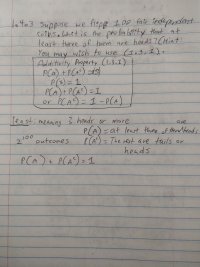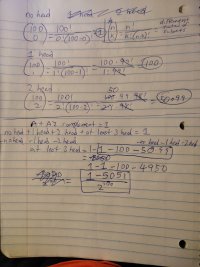nicholaskong100
New member
- Joined
- Aug 1, 2021
- Messages
- 33

Some questions:
1) How do I know if P(A) is at least 3 heads or if P(A's complement) is at least 3 heads instead? Does it matter?
2) At least 3 heads would mean the other 97 toss can be heads or tails. But the book says the union of A and A complement are disjoint meaning A and A complement must have different outcomes. Would that mean the 97 toss cannot be heads, the 97 must be all tails?



